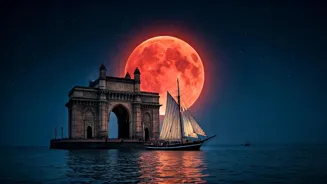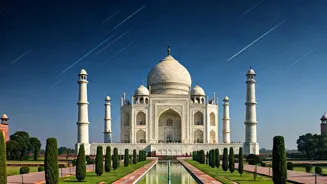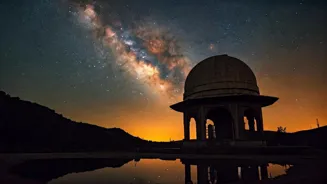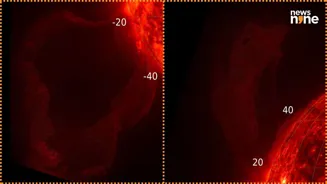What is a Blood Moon?
A blood moon occurs during a total lunar eclipse. Sunlight bends and scatters as it passes through Earth's atmosphere, and the red wavelengths are what
reach the Moon. This makes the Moon appear red. It's quite a spectacle! It's like the Holi colours painted across the night sky.
Why 'Blood Moon'?
The name 'blood moon' comes from the reddish appearance of the Moon during a total lunar eclipse. This red hue is due to the scattering of sunlight by Earth's atmosphere. It's a beautiful sight to behold, much like the glow of diyas during Diwali.
Columbus's Lunar Savior
In 1504, Christopher Columbus and his crew were stranded in Jamaica. When supplies dwindled and tensions rose, Columbus cleverly used his knowledge of a blood moon to his advantage. Knowing a lunar eclipse was imminent, he used this information to negotiate with the locals, ensuring their survival.
How Often Happen?
Blood moons aren't super rare, but they are special. Total lunar eclipses, and thus blood moons, happen a few times per decade. Predicting these events helps astronomers and sky-watchers alike. Keep your eyes on the sky; you might get lucky.
What Happens Then?
During a blood moon, the Earth, Sun, and Moon align. The Earth blocks the Sun's light, casting a shadow on the Moon. As the Moon passes through the Earth's shadow, it turns red. This celestial ballet is a sight to remember, as enchanting as the moonlit nights of Sharad Purnima.












